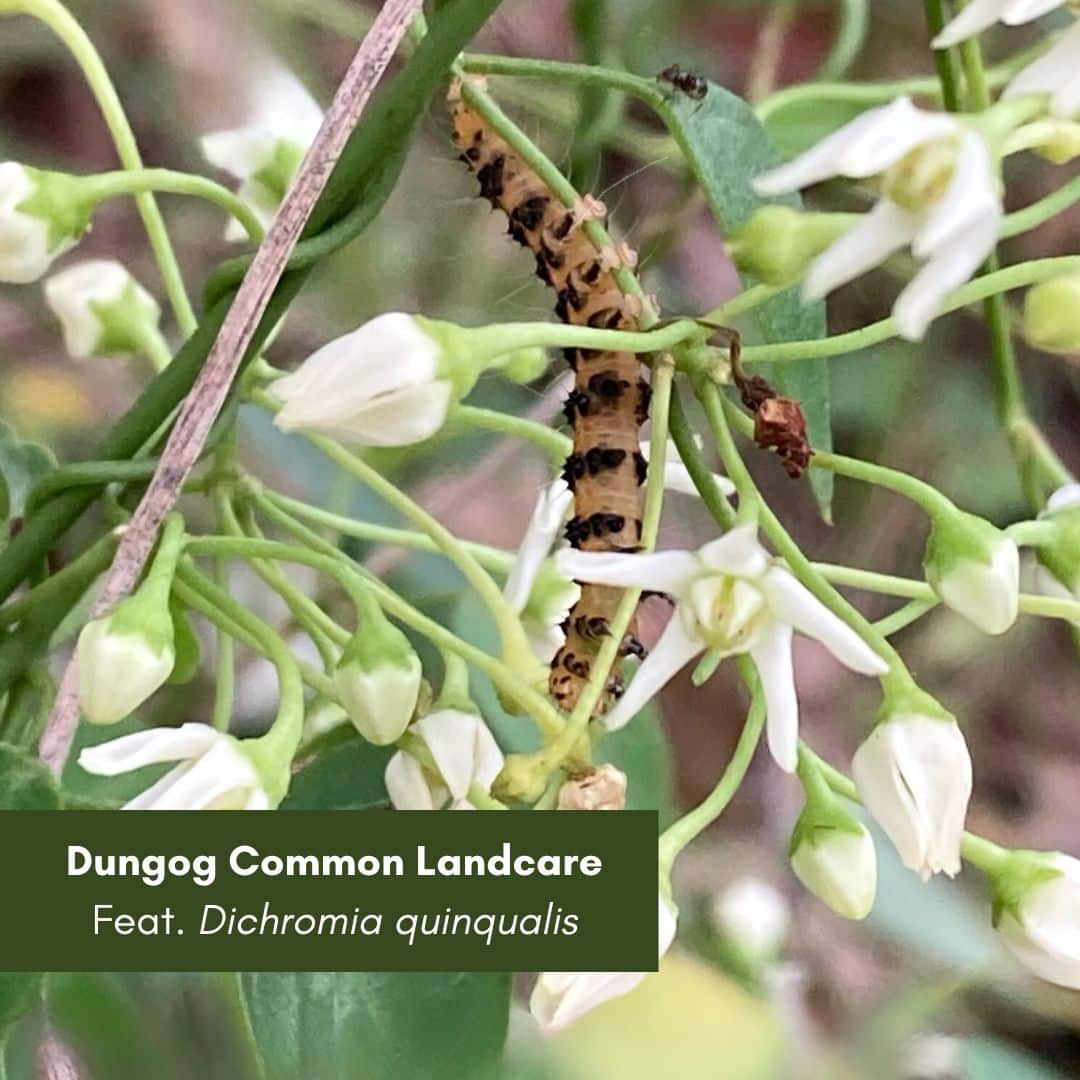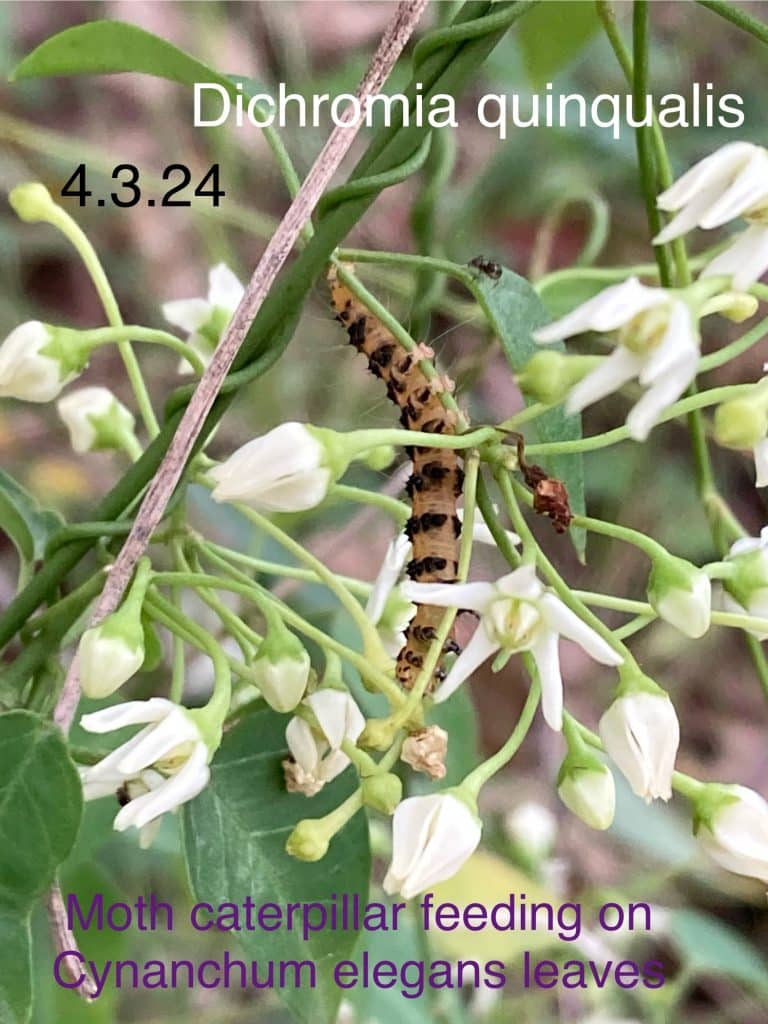Dungog Common Landcarers were able to capture a very rare sight while out on the common this month- not only the Cynanchum elegans (White-flowered Wax Plant- Endangered under the EPBC Act) in flower, but wait…. also the caterpillar of the moth that lays her eggs on them.
See the photo below of the rarely seen caterpillar Dichromia quinqualis feasting on the vine. This moth is the only representative of that genus in Australia (Qld DNR 2000).
Why save it? Well, its a bit like a game of Jenga. You pull out the wrong piece from the bottom of the stack and the whole structure collapses.The conservation of Cynanchum elegans is important in maintaining the biodiversity of all the organisms which play a role in the ecology of the habitats in which it occurs.
The species is known to exist as isolated populations in five locations in eastern NSW, with the population estimated at about 1000 plants. The known northern limit is at Woko National Park in the Manning Valley and the southern limit is at Ooaree Creek, Rose Valley in the Illawarra region. The other localities are: the Cumberland Plain, Western Sydney; the Hunter region; and the Great Lakes area. The majority of populations occur in dry rainforest on volcanic rocks. It has also been recorded in littoral rainforest, open forest, scrub and ecotones between the types and on shales and sand. (Maria and Nash, Sharon. 1994. “Species Profile Cynanchum Elegans – White-flowered Wax Plant.” Danthonia: newsletter of the Australian Network for Plant Conservation 3(2), 4–5. https://doi.org/10.5962/p.373991)
Image from Murray Fagg, ANBG Canberra


